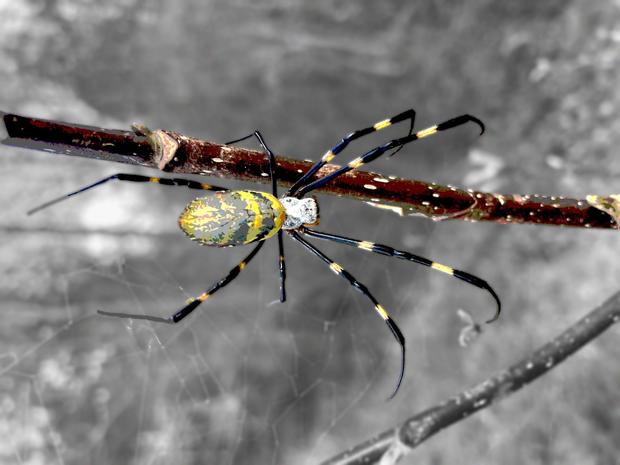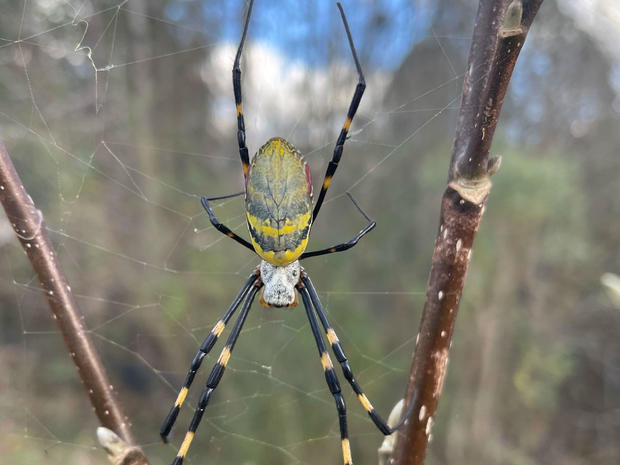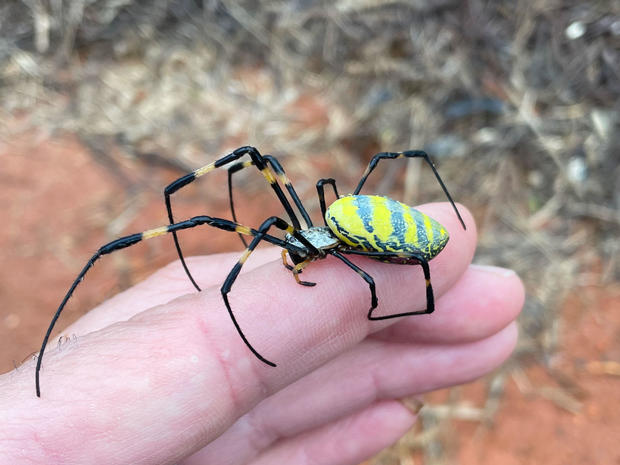Joro spiders are an invasive species known for parachuting through the air. Here's why you shouldn't fear them.
Halloween may be over, but that doesn't mean that scary-looking spiders are done for the year. A large yellow spider known as the Joro spider that's been found in several states is expected to continue spreading along the East Coast, according to a scientist at Clemson University.
The spiders are sometimes called parachuting spiders because they can move by shooting out a long strand of silk that gets caught by the wind, carrying them through the air. But Clemson assistant professor Dave Coyle, who has a doctorate in entomology and has been studying the spiders for years, said people shouldn't expect the brightly colored creatures to suddenly descend on them from above.
"The big ones don't do that," he said. "That's a tiny spider thing. It happens, and people don't even know that there are tiny spiders in the sky."
What are Joro spiders?
Joro spiders were first found in the U.S. in Georgia in 2014. Since then, the species that's native to east Asia has been spotted in Alabama, Maryland, North Carolina, Oklahoma, South Carolina, Tennessee and West Virginia.
Coyle expects them to continue to spread.
"It seems extremely likely that they will have no problem expanding to the whole eastern half of the country," he said.
Are Joro spiders poisonous?
While all spiders have some venom, the Joro spider poses a threat to whatever gets caught in its web — which can include butterflies, cockroaches, stink bugs and wasps — but not to humans.
"We have no evidence that they've done any damage to a person or a pet," Coyle said.
A video about Joro spiders posted online by Clemson shows several children letting the arachnids crawl on their hands.
While the spiders don't pose a threat to humans, they have an effect on other spiders, Coyle said. Areas with high populations of Joro spiders have been found to have lower populations of spiders that are actually native to the area, he said.
"That to me is a very distinct ecological impact," Coyle said.
How big are Joro spiders?
The females can grow to an inch long and 2 to 3 inches across with their legs spread. With their yellow and gray abdomen, the spiders aren't exactly cuddly.
"Anyone that doesn't sort of like all the creepy crawly things, this has all of the characteristics that makes them squeamish," Coyle said.
What should people do if they see a Joro spider?
When it comes to another invasive species, the spotted lanternfly, officials have urged the public to squash them. Coyle would like people to shoot Joro spiders — with a camera.
To help scientists track the spiders, Coyle urged people who come across them to take pictures and upload them to crowdsourcing app iNaturalist.






